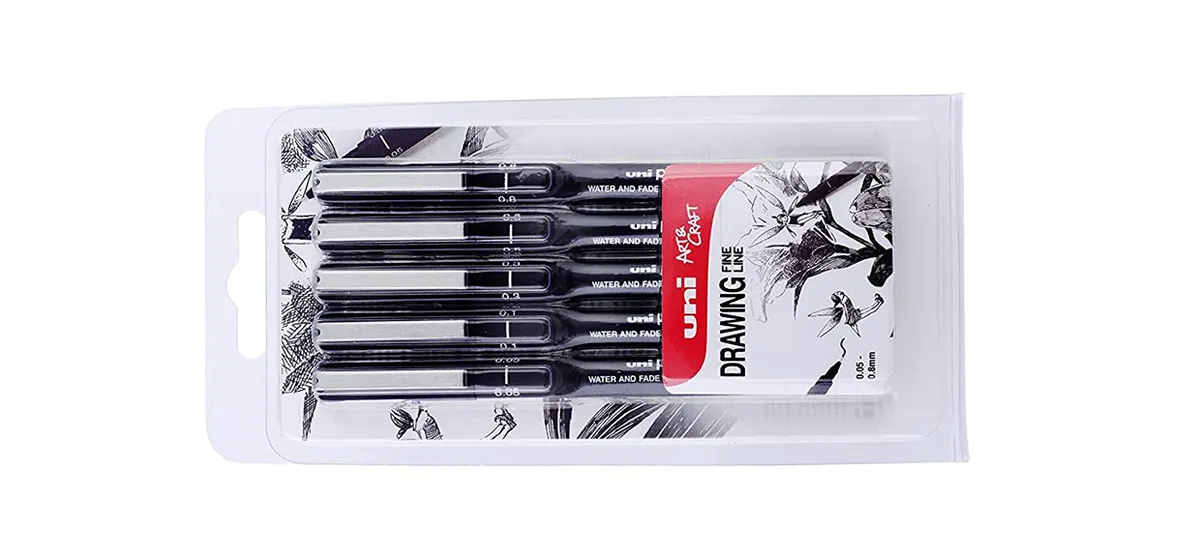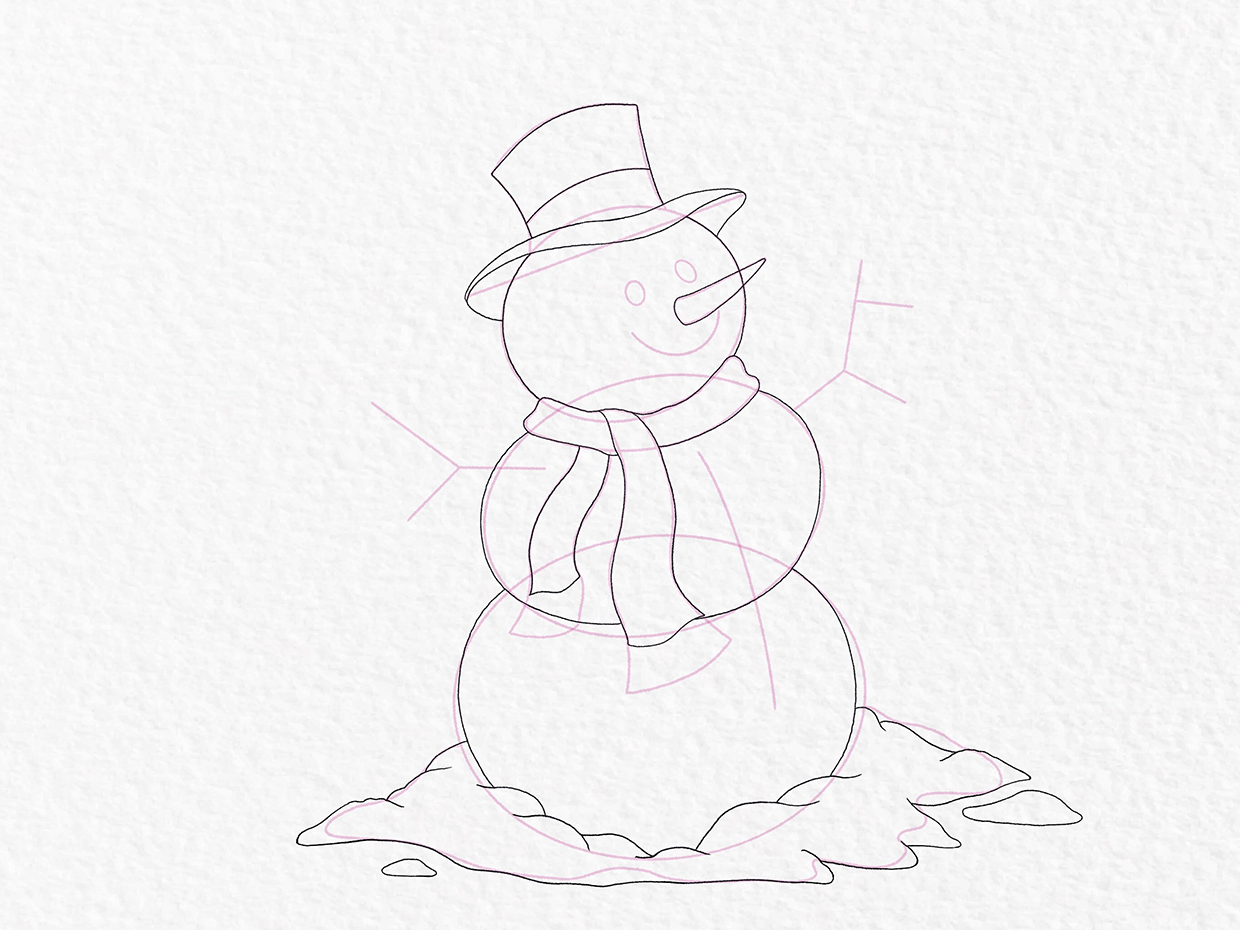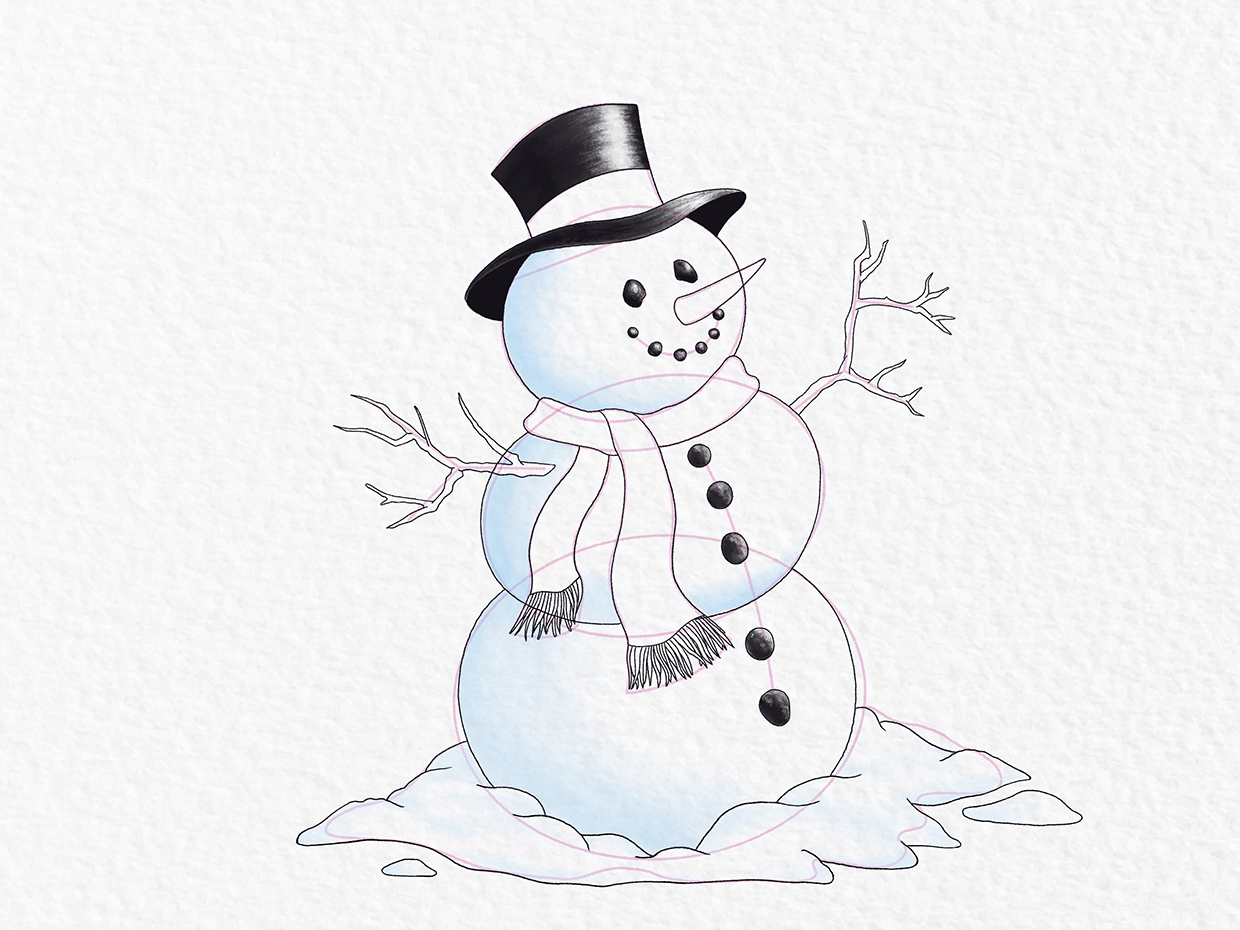Whether it's leading up to Christmas or smack bang in the middle of summer, it's always a good time to learn how to draw a snowman! We’ve put together this easy snowman drawing tutorial for you to enjoy, whatever the weather.
This easy snowman drawing starts life as a series of overlapping ovals. Once you’ve decided on size and proportions, it’s easy to build up with a series of simple shapes and lines.
Add character to your snowman by giving him a cheeky grin, then make sure he doesn’t catch a cold by giving him a scarf and hat.
A partially melted pile of snow helps ground the drawing, while subtle highlights to the hat and coal help add dimension to your artwork. Once finished, you can colour your snowman, or leave as a simple line drawing. This is a great project to try using pencils, but it also works well in pen and ink.
Read on for our top tips and supplies for your drawing, or click here to head straight to the tutorial.

Top tips for your own easy snowman drawing:
Plan the composition first
When sketching out the initial construction lines, keep the design as simple as possible. This helps you to achieve the right proportions, without having to erase big parts of your work. Once you’re happy with the proportions, you can then go in and add more details.
What paper should you use for your snowman drawing?
If you envisage a lot of mistakes, we recommend using thick paper with a high gsm, as this will better stand up to the rigmaroles of heavy erasing without compromising the integrity of the grain (i.e., you won’t rub a hole in the paper!).
Make your snowman look realistic
When drawing the coal that makes up the snowman’s eyes, mouth, and buttons, don’t make them perfectly round. Instead, make the lumps of coal irregular in shape, drawing smaller pieces of coal for the mouth and larger pieces for the buttons.
Think about the posture of your snowman
Snowmen come in all shapes and sizes, but in terms of posture, we like to think they would be looking up at the world around them. Angle your carrot upwards in a diagonal and position the other facial features (and hat) to line up with this. Alternatively, start with the hat first (as we’ve done in this tutorial), and use this as the starting point to align the other facial features.
How to draw a snowman with character
Play around with different expressions by changing the shape and position of the eyes and mouth
Light source
Think about which direction the light is coming from. Apply more shading in areas that face away from this light source, as this helps create dimension
Take inspiration from nature
If you’re finding it tricky to sketch the shape of the branches that make up your snowman’s arms, go outside and draw from life. You might even find the most perfectly shaped branch or twig to help bring your snowman to life!
How to draw a snowman in colour
Use a pale blue colour to shade your snowman. This helps to emphasise that the snowman is cold.
Take it to the next level
Take your snowman drawing one step further – why not perch a small garden bird on the end of one of his arms?
How to draw a snowman - materials needed
Here’s what we recommend you’ll need for this snowman drawing project…
Coloured pencils

If you’d like to make a feature of your construction lines, why not try using coloured pencils to plan out your composition? You’ll have seen these pencils in a few of our videos, and while they may not be the cheapest colouring pencils out there – they are some of the best.
We all know the brand POSCA, and these colouring pencils are the result of several years’ worth of research. They’re made from a unique combination of wax and oil, which means they lay down a rich pigment with a highly concentrated, smooth finish. The soft ‘lead’ breaks much less easily than other colouring pencils, so wastage is minimal.
They blend easily too, so if you’re keen to experiment, the tones can be merged seamlessly to create satisfying gradients.
We think they’d make a fantastic Christmas present!
Sketching pencils for your snowman drawing

If you prefer to be more traditional, then a set of good sketching pencils will always steer you in the right direction. This set of 12 pencils goes from 4H, which produces a hard, fine line, up to 6B, which produces a soft, dark line.
They come in a metal tin, which helps protect them against knocks and bumps (and helps protect against lead breakage), as well as looking good, too. They’re made from sustainably grown, easy-to-sharpen, aromatic cedar wood, and have a lovely, soft texture that blends easily.
Fineliner pens

These black fine liner pens from uni-ball are ideal for technical drawing, and easily stand up to the demands of erasing underlying pencil lines. The ink is UV and fade-resistant, water-resistant and fast drying, so you can be confident that your artwork won’t smudge or fade over time.
They’re made using solid construction, and the nibs are supported by steel tips – but they don’t feel heavy or uncomfortable in your hand. If you’ve watched our pumpkin or rose drawing video tutorial – these are the pens that we used to add detail (the 0.5mm width, to be precise).
They come in at a very reasonable price point, so you don’t need to spend a fortune to bag yourself some quality instruments and boost your drawing arsenal.
Pencil case

Keep your coloured pencils and fine liner pens organised with this fantastic pop-up cat pencil case! This type of pencil case is known as a ‘telescopic’ pencil case, meaning that it folds down to provide easy access to your implements, without the need for rummaging or emptying them all over the table.
This durable pencil case is made from canvas and comes in a variety of different designs, including a unicorn, pink cat, bubble tea and white checks.
Sketchbook

Keep all your doodles together by using a sketchbook. Not only does this enable you to produce a collection of art, but for the beginner artist it also helps you to chart your progress as you learn new techniques, try out different media and keep a record of what works (and what doesn’t!).
This hardback Moleskine sketchbook is the go-to for many artists; it’s durable and can withstand being transported from bag to bag, as you get out and about with your art. The colour of the pages is an off-white, slightly creamy colour, which is easy on the eyes if you’re working with high-contrast black ink.





















